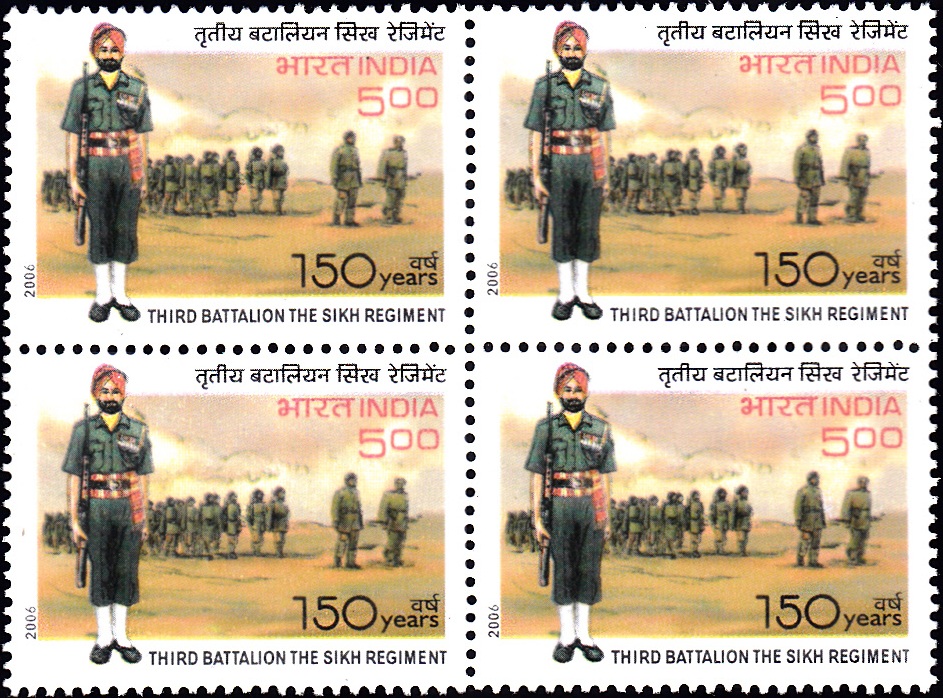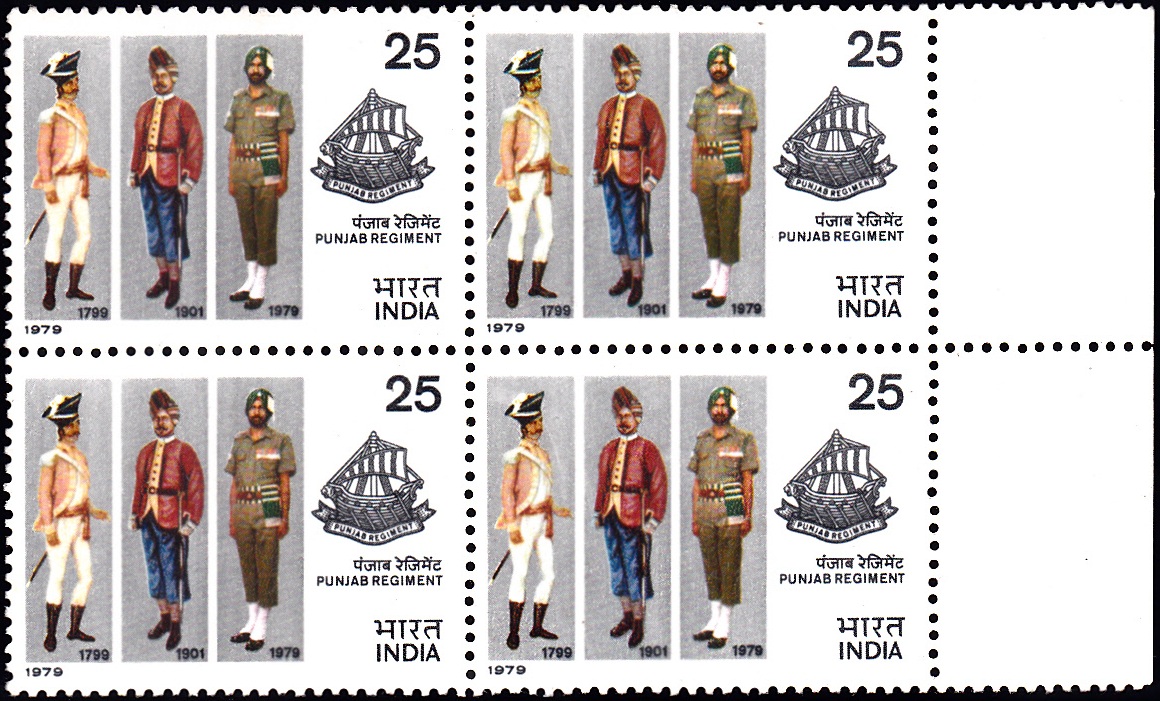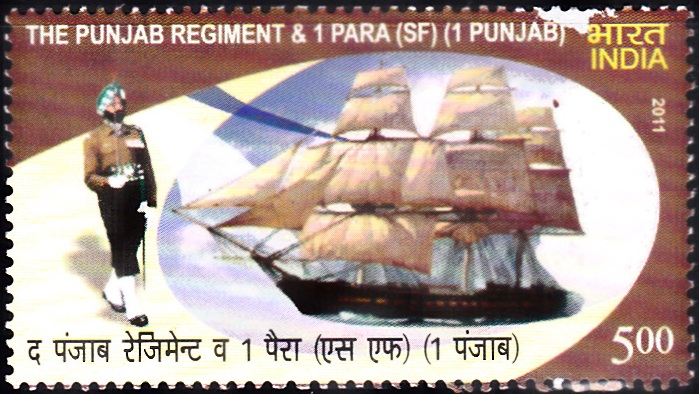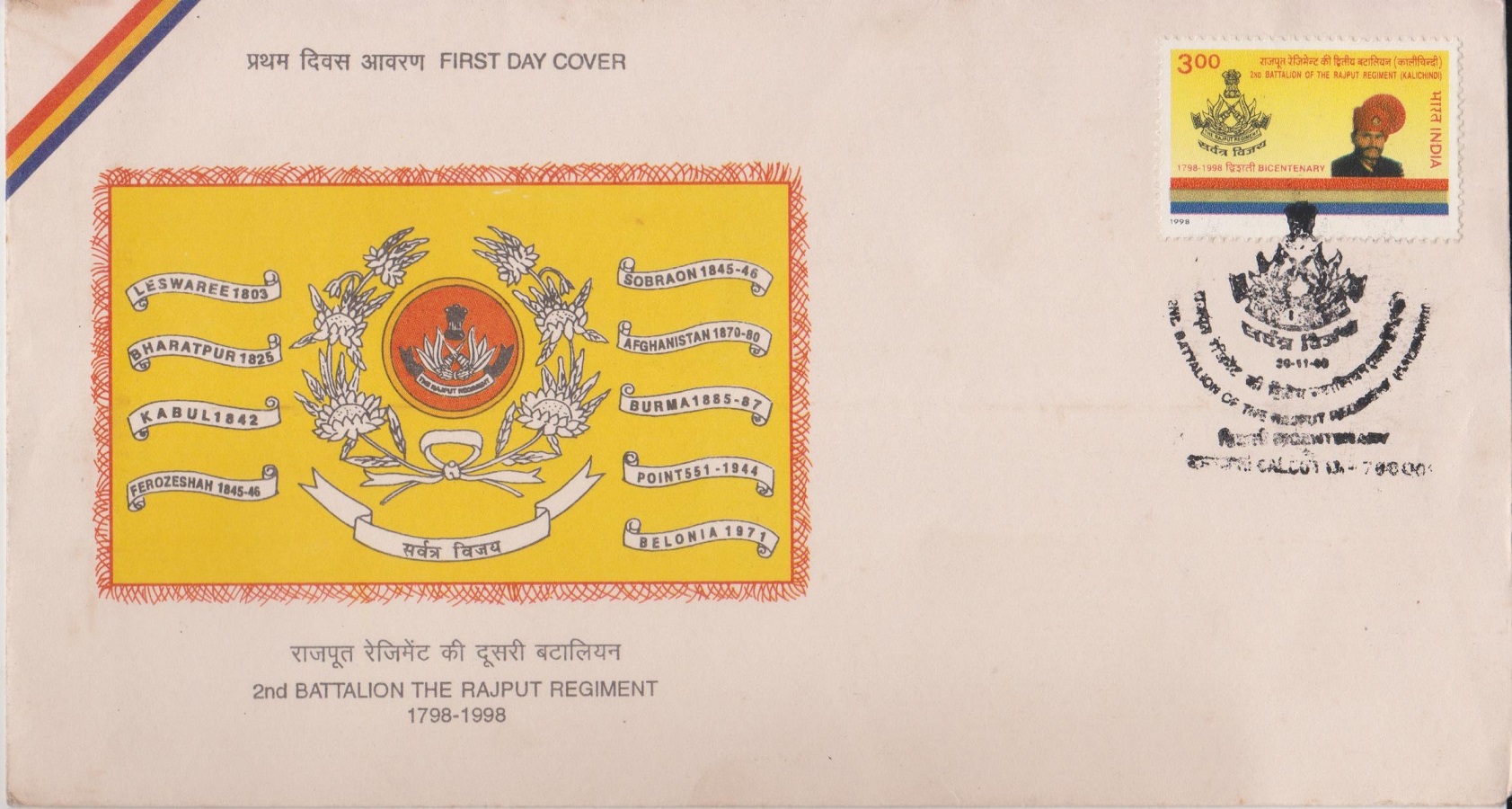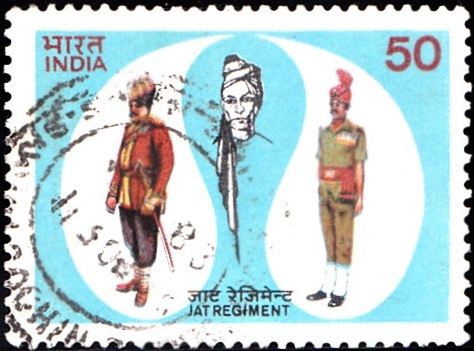
Jat Regiment 1983
A commemorative postage stamp on the Presentation of Colours to 12, 15 & 19th Battalions of the Jat Regiment, an Indian army infantry regiment :
 Issued by India
Issued by India
Issued on Feb 16, 1983
Issued for : Indian Posts and Telegraphs Department is privileged to commemorate the occasion by issuing a special stamp.
Description of Designs : The stamp, designed by Charanjit Lal, portrays the past and present Jat soldiers flanking the old ‘Head’ emblem of Jat Regiment. The first day cover shows the Jat Regimental colour. Cancellation has also been designed by Charanjit Lal.
Type : Stamp, Postal Used
Colour : Multicolour
Denomination : 50 Paise
Overall size : 3.91 x 2.90 cms.
Printing size : 3.55 x 2.54 cms.
Perforation : 13 x 13
Paper : Unwatermarked adhesive stamp paper
Number printed : 20,00,000
Number per issue sheet : 35
Printing process : Photogravure
Printed at: India Security Press
About :
- The Jat Regiment is one of the oldest Regiments of the Indian Army. Its first Battalion was raised in 1803 at FATEHGARH as 1/22 Bengal Native Infantry, later redesignated as 1/9 Jat Regiment. The Battalion was bestowed the title ”Light Infantry” in recognition of its epic march from Kabul to Kandahar in 1842.
- During the First Afghan War, First and Second Battalions performed very meritorious action for which the Battle Honours “Ghuznee”, “Afghanistan“, “Kandahar”, “Kabul” were conferred on the Regiment. It was the first Battalion which brought back the Golden Gates of Somnath Temple from Ghuznee (Ghazni).
- Between the period 1864 and 1880, the three Battalions of the Regiment fought gallantly in various theatres and earned the battle honours “Afghanistan”, “Kandahar”, “Burma” and “China”.
- During the World War I, the First Battalion served in France, Mesopotamia and North West Frontier. During World War II it served in Burma and Malaya. The Second was overrun by the Japanese during the fall of Singapore in 1942. It was later reconstituted in 1946. The Third Battalion fought the famous “Battle of Cauldron” against the German Forces under Field Marshal Rommel. It saw action at Imphal in 1943 and Jamadar Abdul Hafiz was posthumously awarded the Victoria Cross. Later it also served in Java where Havildar Abdul Rehman was posthumously awarded the George Cross. The 5th, 6th and the Machinegun Battalions did commendable work during World War II in Burma. L/NK Islamuddin of 6 Jat was awarded the George Cross at Meiktila.
- During 1965 conflict with Pakistan the First Battalion fought in Ichhogil Uttar Bridge Area whilst the Third Battalion covered itself in glory by the unique action it fought at Dograi. The battle of Dograi will go down as an epic fight in the history of the Regiment. It is a symbol of courage, gallantry and supreme sacrifice.
- In 1971 conflict with Pakistan, the Second, Fifth, Sixth, Twelfth and Fourteenth Battalions fought with distinction in the Eastern Sector. They were involved in the battles of Madhumati, Comilla, Maynamati and Kumira.
- The motto of the Regiment is “Sangathan Wa Veerta” which truly signifies a spirit of unity and valour.
- The Twelfth, Fifteenth and Nineteenth Battalions of the Regiment raised on 6 Feb ’70, 15 May ’76 and 1 Aug ’80 respectively have the honour of being presented Colours on 16 Feb ’83 at Bareilly by the Chief of the Army Staff, General K V Krishna Rao, PVSM.
- The above text is based on the material supplied by the Jat Regimental Centre.


